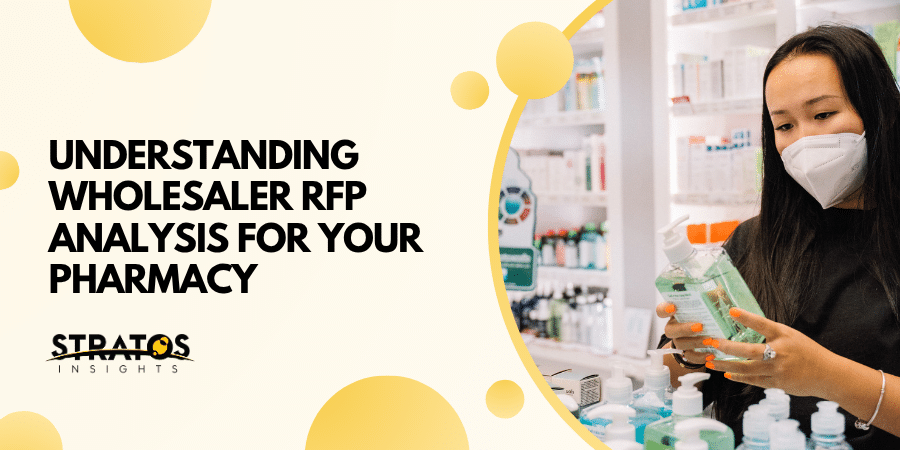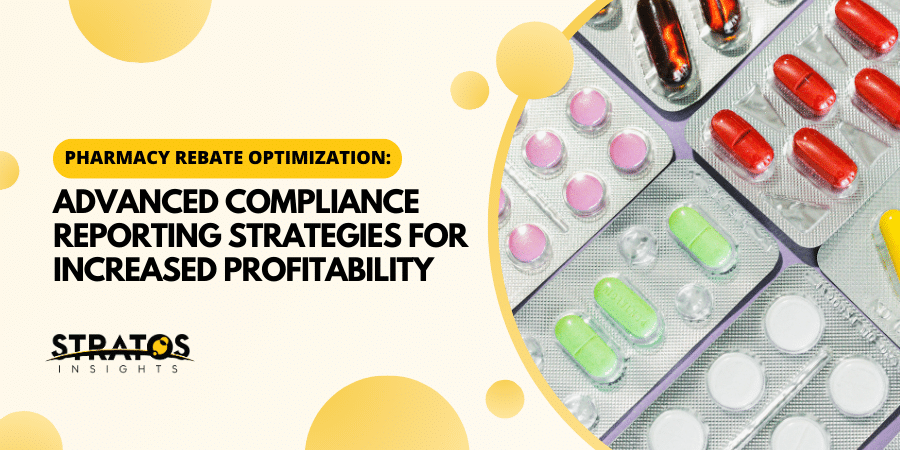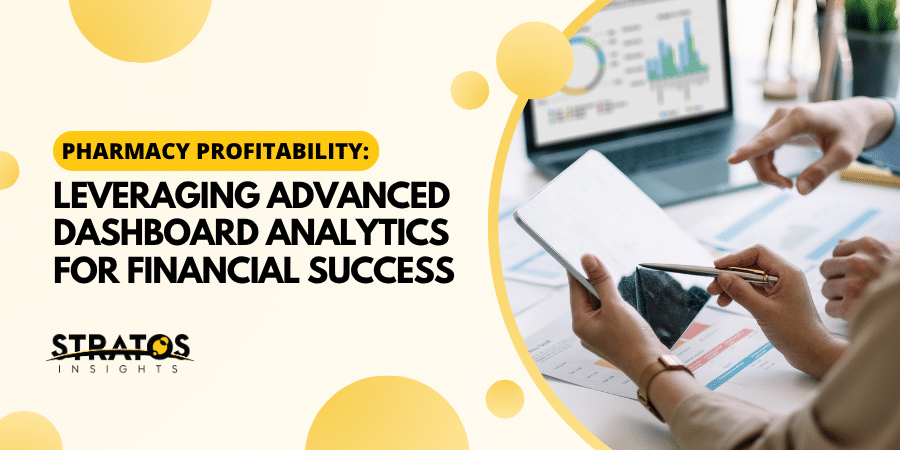In the competitive landscape of the pharmaceutical industry, managing costs and optimizing supply chains are paramount for the success and growth of your pharmacy. One critical strategy to achieve these goals is conducting a thorough Wholesaler Request for Proposal (RFP) analysis. This process enables pharmacies to evaluate and select the best wholesalers, ensuring favorable terms, competitive pricing, and reliable service. This comprehensive guide demystifies wholesaler RFP analysis, empowering pharmacy owners, operators, and consultants to leverage this tool effectively for business optimization and expansion.
What is a Wholesaler RFP?
A Request for Proposal (RFP) is a formal document that a pharmacy issues to potential wholesalers to solicit bids for supplying pharmaceutical products and services. The RFP outlines the pharmacy’s specific needs, including product types, quantities, pricing structures, delivery schedules, and any other relevant terms and conditions. Wholesalers respond with detailed proposals, allowing the pharmacy to compare and evaluate different offerings systematically.
The Purpose of an RFP
The primary purpose of an RFP is to create a transparent and competitive bidding environment. By inviting multiple wholesalers to submit proposals, pharmacies can ensure they are receiving the best possible terms and conditions. This competitive process not only fosters cost savings but also promotes the selection of wholesalers who can meet the pharmacy’s specific operational and strategic needs.
Importance of Wholesaler RFP Analysis in Pharmacy Operations
Wholesaler RFP analysis is crucial for several reasons:
Cost Management
Pharmaceutical products can represent a significant portion of a pharmacy’s expenses. Through RFP analysis, pharmacies can identify wholesalers offering the most competitive pricing, thereby reducing overall costs and improving profit margins.
Supply Chain Optimization
A thorough RFP analysis helps pharmacies select wholesalers who provide reliable and timely deliveries. Consistent supply chain operations are essential to maintain inventory levels, prevent stockouts, and ensure that patients have access to necessary medications without interruption.
Quality and Compliance
Pharmacies must adhere to strict regulatory standards. An effective RFP analysis ensures that selected wholesalers comply with all relevant regulations, quality standards, and accreditation requirements, thereby minimizing legal and compliance risks.
Strategic Partnerships
By evaluating wholesalers’ capabilities, pharmacies can form strategic partnerships that go beyond basic supply agreements. These partnerships can include collaborative marketing efforts, data sharing for better inventory management, and joint initiatives to enhance patient care.
Key Components of Effective RFP Analysis
To conduct an effective RFP analysis, pharmacies must consider several key components:
Clear Objectives and Requirements
Before issuing an RFP, it is essential to clearly define the pharmacy’s objectives and requirements. This includes specifying the types of products needed, desired pricing structures, delivery schedules, and any additional services required from the wholesaler.
Comprehensive Proposal Evaluation Criteria
Establishing a set of evaluation criteria is crucial for objectively assessing each proposal. Common criteria include pricing competitiveness, delivery reliability, product quality, compliance with regulatory standards, and the wholesaler’s reputation and track record.
Data-Driven Decision Making
Utilizing data and analytics is vital in comparing different proposals. Data-driven insights help identify patterns, highlight cost-saving opportunities, and ensure that decisions are based on factual information rather than subjective opinions.
Transparency and Objectivity
Maintaining transparency and objectivity throughout the RFP process ensures fair evaluation of all proposals. This includes standardizing the evaluation process, documenting decisions, and avoiding biases that could skew the results.
Steps to Conduct Wholesaler RFP Analysis
Implementing a structured approach to RFP analysis enhances its effectiveness. Here are the essential steps:
1. Define Your Needs
Start by outlining your pharmacy’s specific needs and objectives. Consider factors such as the range of products required, expected order volumes, delivery schedules, pricing expectations, and any specialized services needed.
2. Develop the RFP Document
Create a detailed RFP document that clearly communicates your requirements to potential wholesalers. Include sections on product specifications, pricing structures, delivery expectations, compliance standards, and the deadline for proposal submissions.
3. Identify Potential Wholesalers and Buying Groups
Research and identify a list of reputable wholesalers or buying groups who can meet your pharmacy’s needs. Consider factors such as market reputation, product range, geographic coverage, and the ability to scale with your business as it grows.
4. Distribute the RFP
Send the RFP to the selected wholesalers, ensuring that each potential partner receives the same information and has an equal opportunity to respond. Providing a clear deadline and instructions for submitting proposals is essential for maintaining a fair process.
5. Collect and Review Proposals
Once the proposals are received, organize and review them systematically. Use your predefined evaluation criteria to assess each proposal objectively, focusing on key factors such as cost, delivery capabilities, and compliance with requirements.
6. Conduct Follow-Up Discussions
Engage in follow-up discussions or negotiations with shortlisted wholesalers to clarify any ambiguities, negotiate better terms, or request additional information. These interactions can provide deeper insights into each wholesaler’s capabilities and reliability.
7. Make an Informed Decision
Based on the evaluation, select the wholesaler that best aligns with your pharmacy’s needs and offers the most advantageous terms. Ensure that the decision is backed by data and aligns with your strategic objectives.
8. Finalize the Agreement
Once a wholesaler is selected, finalize the contractual agreement, ensuring that all negotiated terms are clearly documented. Establish a communication plan to foster a strong working relationship moving forward.
Leveraging Data in RFP Analysis
Data plays a pivotal role in enhancing the accuracy and effectiveness of RFP analysis. Here’s how to leverage data effectively:
Data Collection and Integration
Gather relevant data from various sources, including sales reports, inventory levels, previous purchase histories, and market trends. Integrate this data into a centralized system to facilitate comprehensive analysis.
Advanced Analytics
Utilize advanced analytics tools to process and analyze the collected data. Techniques such as trend analysis, cost-benefit analysis, and scenario modeling can provide deeper insights into each proposal, helping to identify the most beneficial options.
Real-Time Reporting
Implement real-time reporting capabilities to monitor the RFP process as it unfolds. Real-time data allows for timely adjustments and ensures that you have up-to-date information to inform your decisions.
Visualization Tools
Use data visualization tools to create intuitive and easily interpretable reports. Visual representations of data, such as graphs and charts, can simplify complex information and highlight key trends and comparisons.
Benefits of Effective Wholesaler RFP Analysis
Conducting a thorough RFP analysis offers numerous benefits to pharmacies:
Cost Savings
By identifying the most competitive pricing structures, pharmacies can significantly reduce procurement costs. These savings can be reinvested into other areas of the business, such as expanding product lines or enhancing patient services.
Improved Supply Chain Efficiency
Selecting wholesalers with reliable delivery systems ensures that your inventory levels are consistently maintained. This reduces the risk of stockouts, minimizes holding costs, and enhances overall supply chain efficiency.
Enhanced Negotiation Power
A well-conducted RFP analysis provides a strong foundation for negotiations. Pharmacies can leverage the data and insights gathered to negotiate better terms, such as volume discounts, favorable payment terms, and additional services.
Risk Mitigation
By selecting reputable wholesalers who comply with all regulatory standards, pharmacies can mitigate risks related to compliance violations, product quality issues, and supply chain disruptions. This ensures the long-term sustainability and reputation of your pharmacy.
Overcoming Challenges in Wholesaler RFP Analysis
While the benefits are substantial, pharmacies may encounter challenges when conducting RFP analysis. Here’s how to address them:
Complexity of Data
Managing and analyzing large volumes of data can be daunting. Investing in robust data management and analytics tools can simplify this process, allowing for more accurate and efficient analysis.
Time Constraints
RFP analysis can be time-consuming, especially for pharmacies with limited resources. Streamlining the process through standardized templates, automated tools, and dedicated personnel can help manage time effectively.
Ensuring Data Accuracy
Accurate data is critical for reliable analysis. Implement stringent data validation and quality control measures to ensure that the information used in the RFP process is precise and up-to-date.
Managing Multiple Proposals
Handling multiple proposals simultaneously can be overwhelming. Organize the evaluation process by categorizing proposals based on key criteria and using scoring systems to prioritize the most promising options.
Conclusion
Wholesaler RFP analysis is a powerful tool that pharmacies can leverage to optimize their supply chains, reduce costs, and support strategic growth. By conducting a thorough and data-driven RFP analysis, pharmacy owners and operators can make informed decisions that enhance profitability, ensure compliance, and improve operational efficiency. Whether managing a single location or overseeing multiple chains, integrating effective RFP analysis into your business strategy can unlock significant opportunities for expansion and long-term success.
At Stratos Insights, we specialize in aiding pharmacies to navigate the complexities of wholesaler RFP analysis. Our comprehensive business intelligence dashboards, real-time data integration, and expert guidance empower you to make confident, data-driven decisions. Partner with us to transform your RFP analysis process and drive your pharmacy business towards sustained growth and excellence.



